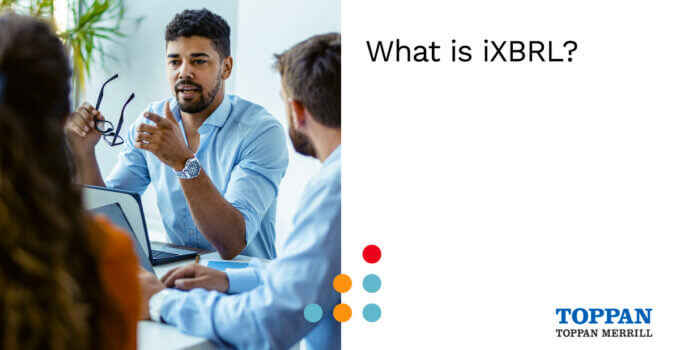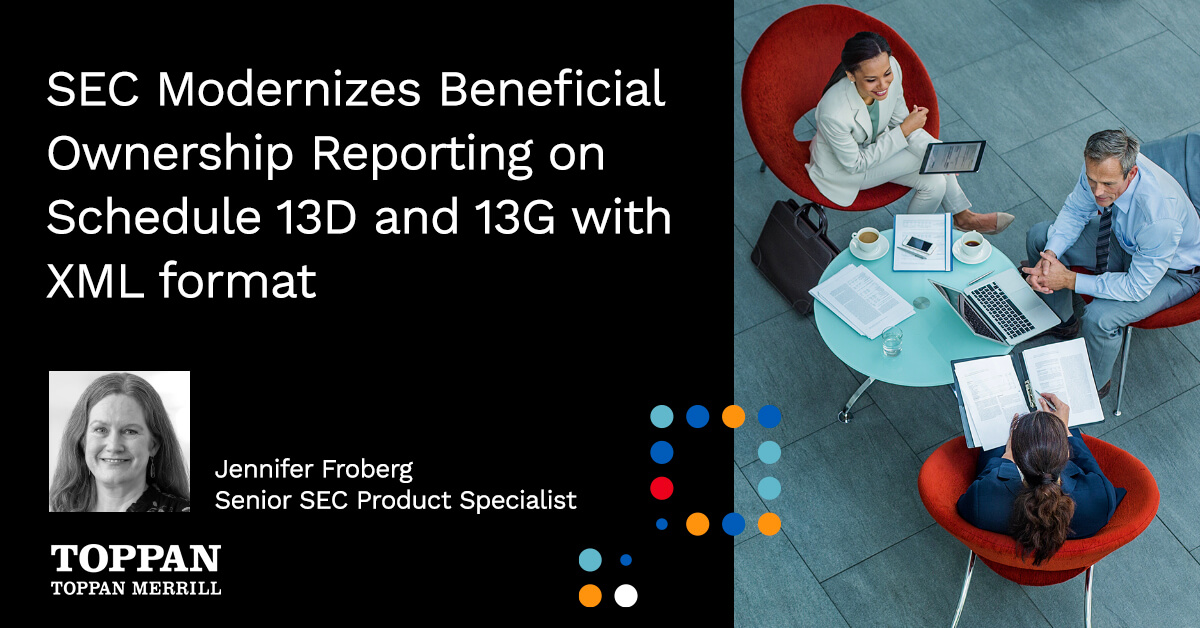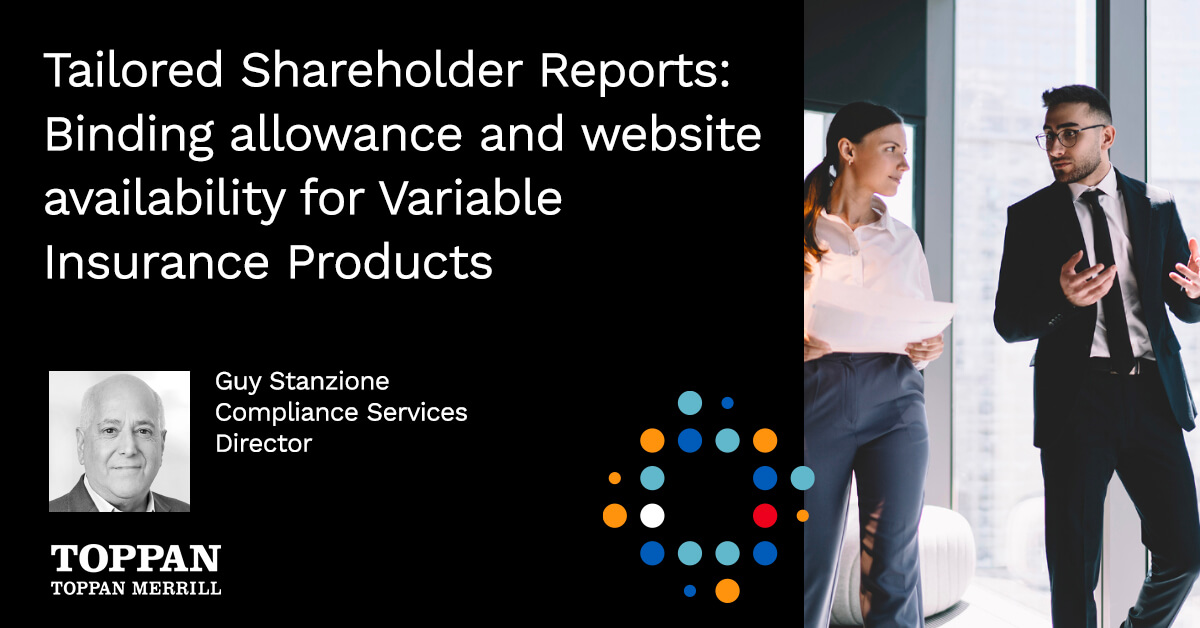What is Inline XBRL?
iXBRL (Inline XBRL) is a filing format that merges the aesthetic benefits of a human-readable HTML file with the machine-readable XBRL instance document file. The result is a combined file that is submitted to a regulator — and available to the public through the EDGAR program — that contains both the traditional financial statements and the XBRL tagging information.
XBRL tags are embedded “in line” with the text of the traditional HTML document. In short, iXBRL enables filers to prepare a financial report that looks like a traditional financial statement and is appealing to the eye, but has all of the rich, machine-readable XBRL data embedded under the text.
Who is required to use iXBRL?
As of June 15, 2021, the SEC requires that all US GAAP and IFRS filers submit periodic and interim financial reporting using the Inline XBRL format. The European Standards Market Authority (ESMA) followed with its own European Single Electronic Format (ESEF) mandate for the use of iXBRL and governing bodies in a number of markets worldwide are implementing similar iXBRL requirements.
What is Inline XBRL, and how does it work?
iXBRL is enabled by xHTML (eXtensible HyperText Markup Language), which takes traditional HTML and adds a layer of machine-readable metadata. Most web pages today use xHTML: the HTML layer includes the basic text, colors and images that we see, while the metadata later includes all the information that Google and other search engines use to instantly scan the page, understand its content and rank the page.
iXBRL uses xHTML to place XBRL tags “in line” (in the metadata layer) with the visible text. Like a modern web page, iXBRL provides both human and machine readers with the information they want, all in the same document.
The SEC includes an iXBRL viewer in the EDGAR system, enabling anyone with a recent standard internet browser to view publicly available iXBRL filings right within the EDGAR system. The iXBRL viewer enables human readers to easily navigate, search and filter using the XBRL tags embedded within the document.
What is the benefit of iXBRL?
iXBRL builds on the core benefits of XBRL:
- Making financial information machine-readable: XBRL makes it much easier for data analytics tools to consume financial information. XBRL tags essentially function as barcodes for the financial numbers, so that computers and analytics tools can instantly ingest this data for immediate analysis and comparison.
- Making financial information more usable: The reality is that people don’t read financial statements cover-to-cover as often anymore and increasingly use data analytics tools to digest and distill the insights they are looking for. By making financial information more machine-readable, Inline XBRL ultimately makes that information easier for people — investors, analysts, etc. — to consume and use that information.
- Driving consistency in financial reporting: iXBRL filings are required to follow either the US GAAP taxonomy or the IFRS taxonomy. This comprehensive, standards-based tagging helps to drive consistency and enable better comparisons both within and among companies’ financial statements.
- Giving companies greater control of telling their story: Historically, analysts and journalists have served as the interpretive storytellers of companies’ financial information, consuming the full-text statements and providing the public with their interpretations, comparisons and other insights. iXBRL lets companies tell their financial story directly to the public, using consistent tags that enable the audience to directly understand and compare financial information.
Finally, iXBRL takes all those XBRL benefits and wraps them up with the simplicity and efficiency of creating and filing a single document. Previous to Inline XBRL, filers created their traditional PDF or HTML document — and then created a separate XBRL document.
A short history of iXBRL
The story of iXBRL actually goes back to the Great Depression. In response to the stock market crash of 1929, the SEC drafted the Securities Exchange Act of 1934. The act focused on creating greater transparency and accountability by requiring publicly traded companies to make certain financial information publicly available. Today, all that information is digitally available to the public through the EDGAR system.
The eXtensible Business Reporting Language (XBRL) was created in 1998. In 2005, the SEC started accepting voluntary XBRL submissions — and since 2009, the SEC mandated that all periodic and interim financial reporting be submitted using the XBRL format. Beginning a decade later in 2018, the SEC began phasing in requirements for filings to be submitted in iXBRL. As of June 15, 2021, all US GAAP and IFRS filers are now required to file both their annual Form 10-K and quarterly Form 10-Qs in iXBRL format.
The EU and other global markets have begun following a similar trajectory toward mandating filing in iXBRL format.
What is the iXBRL creation, tagging and filing process?
In the U.S., best practice is now to do your iXBRL tagging right alongside the drafting or creation of your financial statements — truly in-line, instead of as a separate post-drafting process. This includes the annual 10-K form, all quarterly 10-Q forms, as well as any interim 8-K forms.
How do you select XBRL tags?
There are two main standards, or taxonomies, for XBRL tagging. The US GAAP (Generally Accepted Accounting Principles) taxonomy is used primarily by domestic filers in the U.S., while the IFRS (International Financial Reporting Standards) taxonomy is used by international filers in the U.S., EU and other markets with iXBRL requirements. Both taxonomies serve as widely accepted guides that codify XBRL tagging principles to ensure consistency and accuracy in tagging.
Toppan Merrill is here to help with Bridge, an intuitive SEC reporting platform that provides a single source for your EDGAR and iXBRL submissions.
For 55+ years, the dedicated SEC reporting experts at Toppan Merrill have supported issuers navigating the regulatory disclosure and filing process. Visit our SEC reporting page to learn more – or connect with one of our experts at [email protected] or by calling 800.688.4400.



